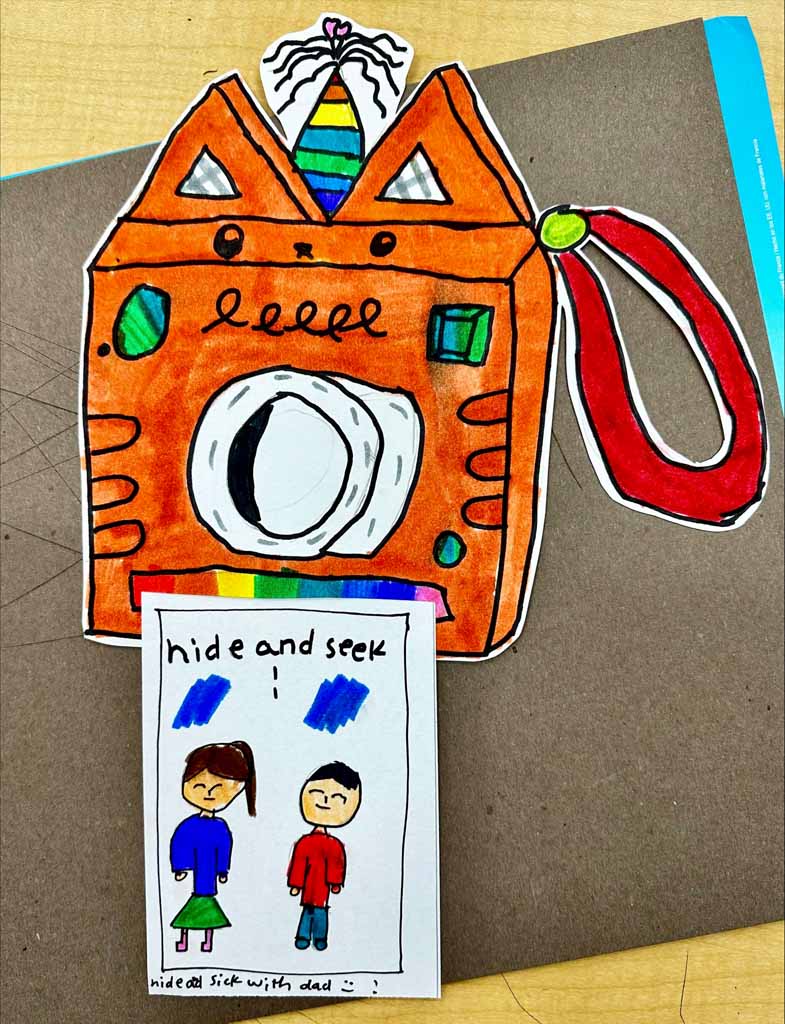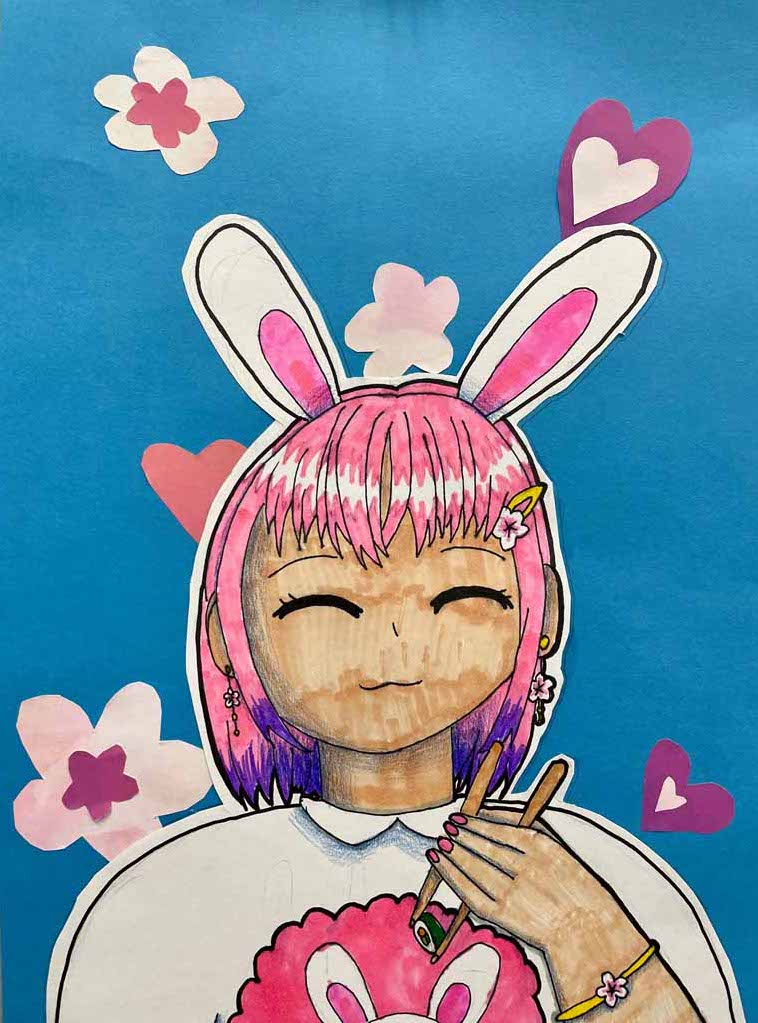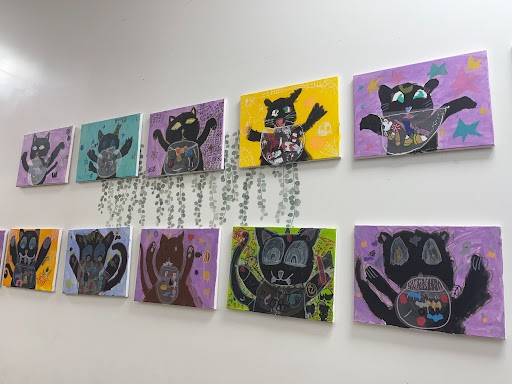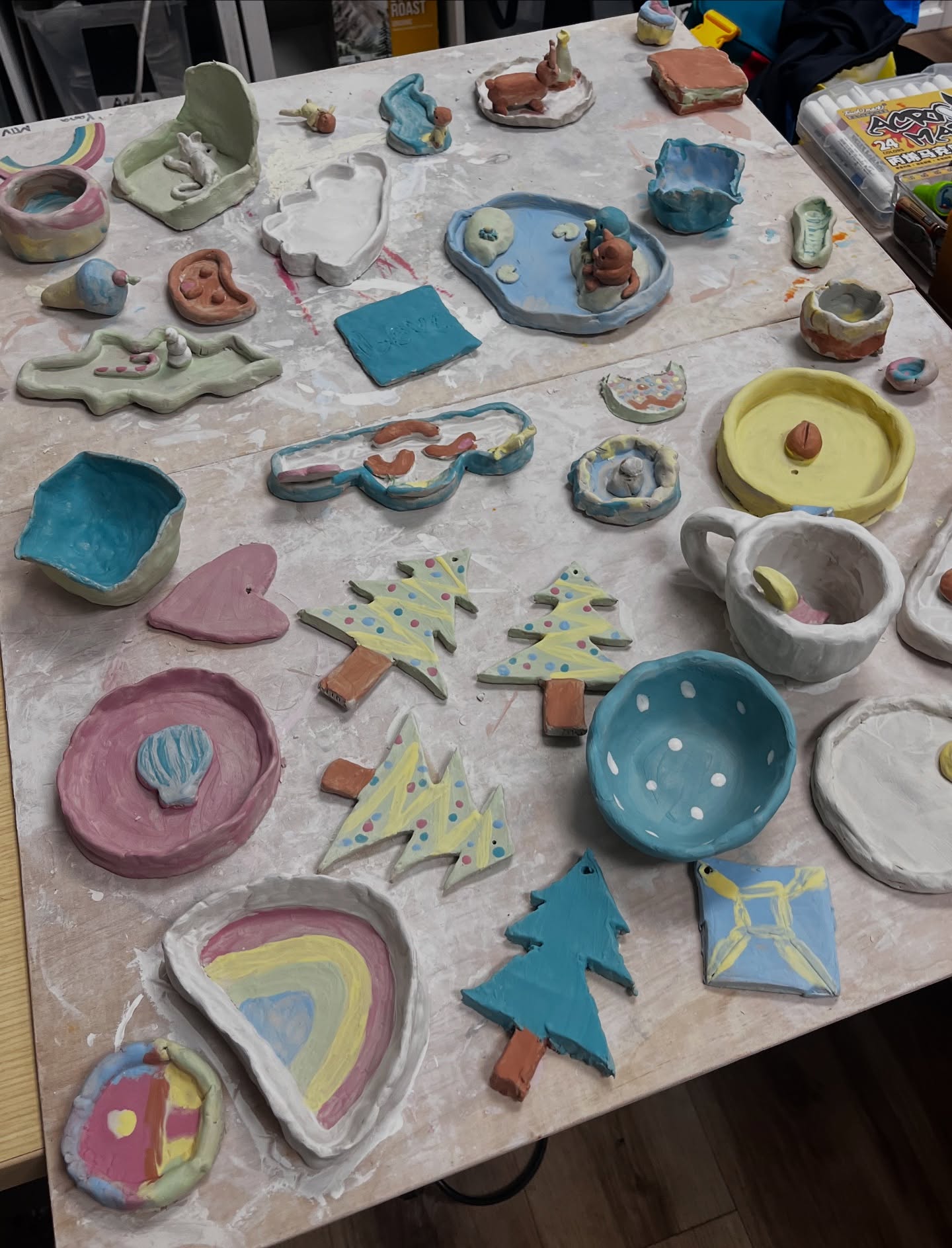How Does a Children’s Art Class Help with Emotional Development?
Creativity is not idle in children; it is becoming part of who they are. One of the best and most supportive places to allow such development to occur might be a children's art class. Though the children may seem to be just plainly having fun with the paint, paper and clay, there is a little bit more going on than just the experience itself.
Art enables kids to cope with emotions, communicate without words and harbor emotional strength. Whatever your kid is like, whether they are reserved, hyper, or something in between, the discipline of an artistic course can be wholesome to their emotional well-being in general and in the long term.
The Relationship Between Art and Emotion in Children
Every day, children go through numerous different emotions that they can hardly express. Art offers a common and important expression method. Sometimes, kids can express difficult feelings through imagination, colors, lines, and shapes.
When they create a stormy, angry cloud or are doing a twirling dance in color, they are bringing in the emotion that they cannot express in words. They gain progressively more solid command of their feelings as they practice their externalizing of feelings through art.

Building Self-Esteem Through Creative Accomplishment
One of the highest returns on a children's art lesson is the self-esteem boost of creating something special and meaningful. When children complete an artwork and can see it proudly displayed or even simply viewed by their teacher or class, they feel accomplished.
Major Self-Esteem Payoffs:
- Completing an art project fosters a child's sense of competence.
- Positive reinforcement encourages them to take healthy, creative risks.
- Individual creativity is encouraged, not measured.
These moments of confidence carry over into other aspects of life, and children are more confident going to school, having friends, and dealing with difficulties.
Social Development in a Non-Competitive Environment
Art classes do not have any competition as compared to other sports activities or even homework. The children are not there to win a race to see who does it first or gets the most points, but rather they are free to express, in their own way, to be imaginative and just be free.
In a group environment, children's art class encourages sharing, cooperation, and constructive feedback. A child can give compliments to another child on his or her piece or can brainstorm with the other child about color use and come to a feeling of empathy and social consciousness within a safe and social atmosphere.
Art as a Form of Stress Relief
Even children experience stress, adjusting to school, personal problems, or even transitioning in the home. Art is a calming escape that allows children to help relax, focus, and simply forget all of it.
Activities like painting, coloring, or drawing can be meditative to perform. The majority of students at Cal Color say they feel relaxed and happier once they leave a class, which is usually observed by their parents as well.
It is not just making art, but being happy to be oneself, to feel protected, and taken care of, without the fear of being judged.
Building Emotional Vocabulary and Communication
Cal Color instructors are taught to talk about feelings in a sensitive way. If a child has made an abstract or very powerful piece of work, instructors can ask open-ended questions such as:
- "What were you thinking about when you did this?"
- "How does that color feel to you?"
These types of exercises help children relate a visual representation to a feeling. Over time, children learn to communicate their feelings through both images and words.
It is for this reason that most parents who look for "children's art classes near me" are surprised to see how far their children can emotionally develop even after a small number of weeks.
Building Patience and Concentration
Art is tiresome, especially when one is forced to employ such methodologies as layering, shading, or sculpting. The children are taught to keep on trying a project, and even when it is not so good, the first time around. This inculcates in them patience, grit, and concentration, critical emotional tools that they will live with them, proceeding to continue to live.
Rather than being forced to do it, children are taught to glance, be patient, and use their own minds, all of which will serve them well in the era of infinite distraction and stimulation.
Why Cal Color Is a Trusted Space for Creative Growth
Cal Color is not just an art school; it is an organization of artists where children are made to feel welcome, noticed, and empowered. Around California, Cal Color has the structured programs to ensure emotional and artistic development from preschool to high school.

Why Cal Color is Special:
- Experienced Teaching: The teachers are not only qualified but also trained counselors to help develop the emotional and creative minds of children.
- Progressive Curriculum: Curricular requirements are structured to progress at a steady pace in line with a child's capacity and age.
- Positive Environment: The studio is a haven that pleases, welcomes, and encourages children and parents, a safe place in which every child feels free to discover themselves.
Parents looking for "children's art classes near me" typically find that Cal Color offers more than art; it provides an avenue of emotional health, artistic confidence, and happy expression.
Conclusion
Art is much more than paper and paint; it opens up a world of emotional expansion, self-worth, and human maturity. Whether your kid is too dramatic or just needs a wake-up call to direct some verbiage towards the world, art provides a non-verbal, yet extremely therapeutic medium.
Investing in creative experiences like Cal Color is taking your child with a better skill to handle emotions, communicate freely and vividly perceive to make this world the way it is through a bright, vivid splash of color. So if you've ever wondered if "children's art classes near me" are worthwhile, the answer is a resounding, confident yes.
Frequently Asked Questions (FAQs)
1. At what age can my child participate in art classes?
All but the most advanced art schools, and Cal Color is not one, provide classes early on at approximately age 4 or 5. These classes emphasize creativity and having fun.
2. Is there pre-class shopping to do?
Generally not. Cal Color supplies everything, particularly for young children. But as your child becomes more experienced, you might want to invest money in a personal sketchbook or simple tools.
3. What should I expect in my child's initial few lessons?
Look for an emphasis on freedom, fun, and experimentation. The works of art will likely be abstract, colorful, and messy, but that's the nature of emotional expression and creative thinking.
4. Where can I find excellent children's art classes in my area?
Seek out studios that have professional instructors, a friendly atmosphere, and classes for various age groups. Online support groups, parental feedback, and sampling classes can help to find them.
5. How will art assist my child in communicating more effectively?
Art provides children with a means of conveying feelings they have not yet learned or lack words to describe. Gradually, it promotes open expression, sensitivity to emotions, and confidence in imaginative thinking.

How Art Classes for Kids Encourage Emotional and Cognitive Growth?

Discover the Best Art Classes in Fremont for Kids

5 Reasons to Enroll Your Child in a Children’s Art Class Today

10 Reasons Why an Art Class for Kids Boosts Creativity and Confidence

How a Children’s Art Class Can Inspire Lifelong Passion?

Unlock Your Child’s Creativity with Art Classes in Belmont

How Does a Children’s Art Class Help with Emotional Development?

How Does an Art Class for Kids Boost Creativity and Confidence?

What Should You Look for When Choosing Art Classes in Mountain View?

What Makes Fremont Art Classes So Popular in 2025?

2025 IAMA Youth Art Contest and Exhibition
Unlock Your Child’s Artistic Potential: Finding the Right Art Class for Kids

Artistic Eyes: Exploring the Secrets of Composition

8/10 CalColor Open House tryout Classes Invitation

Teen Boot Camp: The Winning Strategy for College Applications

An Artistic Summer to Renew Kids’ Life: 4 Key Logics Reveal the Value of Art Camps

Brush of the Future: How Digital Art Empowers Children's Path to College and Career

Summer Camp Carnival: A Must-Attend Artistic Feast for All Ages

The Dream of Art, The Journey of a Year: CalColor 2023 Year-End Summary

How to Visit an Art Museum – A Guide for Families

Rising from Scratch: The Remarkable Journey of CalColor Teen Program

Changing Perspectives: How Art Transforms Students' Views of the Everyday
CalColor Academy's younger students recently explored car interiors. Students typically draw the outside of cars, but we asked them to focus on the details of dashboards, steering wheels, and AC vents. Different age groups used various techniques: younger students focused on basic shapes and one-point perspective, while older students honed advanced skills like hand drawing and shadow incorporation. These projects highlighted how art can change our perspective, revealing the extraordinary in the every day, a valuable lesson for our students on their artistic journeys.

Dawning Realism
When kids reach middle school and high school age, they become more advanced in their understanding of value, shape, proportion, and want to stretch their ability to mimic real life.





